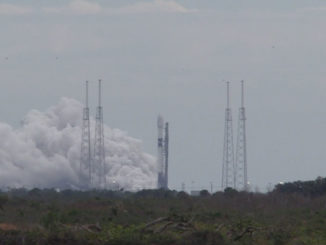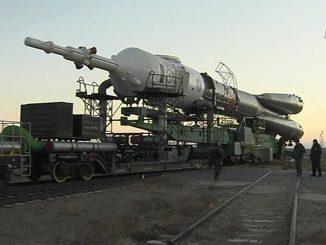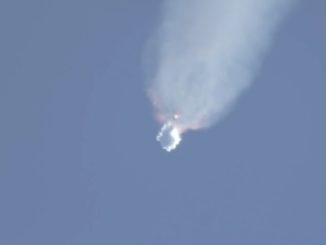STORY WRITTEN FOR CBS NEWS & USED WITH PERMISSION
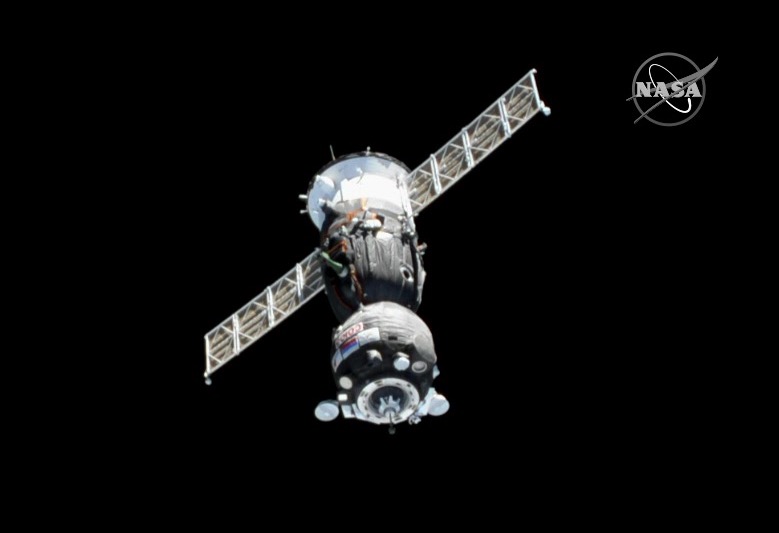
With an absence of fanfare amid coronavirus safety protocols, an upgraded Russian Soyuz rocket making its first piloted flight blasted off from Kazakhstan Thursday carrying two cosmonauts and a NASA astronaut on a speedy four-orbit trip to the International Space Station.
The Soyuz 2.1a booster’s first and core stage engines ignited on time at 4:05 a.m. EDT (1:05 p.m. local time), throttled up to full power and lifted the rocket smoothly away from its firing stand at the sprawling Baikonur Cosmodrome.
Strapped into the Soyuz MS-16/62S command module’s center seat was veteran cosmonaut Anatoli Ivanishin, joined by rookie flight engineer Ivan Vagner on the left and Navy SEAL-turned-astronaut Chris Cassidy on the right. Like Ivanishin, Cassidy is making his third space flight.
The climb to space went smoothly and eight minutes and 46 seconds after liftoff, the booster’s third stage engine shut down and the Soyuz spacecraft was released to fly on its own. A few seconds later, its two solar arrays snapped open and antennas deployed as planned.
NASA Administrator Jim Bridenstine tweeted congratulations.
“Chris Cassidy, Anatoly Ivanishin and Ivan Vagner are safely in orbit,” he said. “No virus is stronger than the human desire to explore. I’m grateful to the entire @NASA and @roscosmos teams for their dedication to making this launch a success.”
The countdown and launch were carried out without the usual cheers and encouragement from the crew’s families, friends and space agency personnel. Non-essential personnel were barred from the launch site under coronavirus travel restrictions.
The relatively small group of support personnel that was present wore face masks and kept their distance during crew walkout for the bus ride to the launch pad.
But the lack of fanfare made no difference to the launch team, and the 2.1a booster chalked up a flawless climb to space. It was the rocket’s first flight with a crew on board after a series of unpiloted missions to prove its reliability.
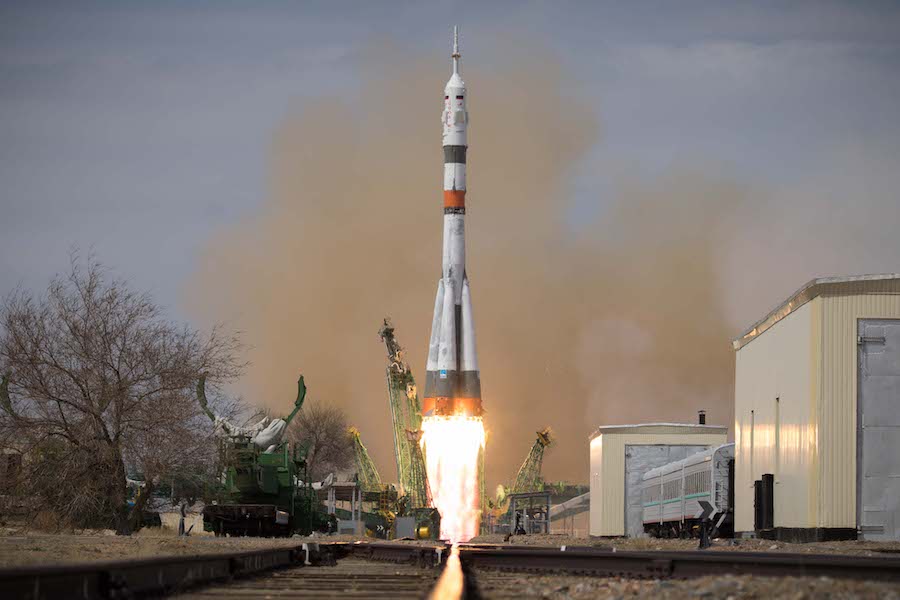
The space station passed directly over the launch site about three minutes before takeoff and the booster climbed directly into the plane of its orbit. Six orbits after that, at 10:13 a.m., the Soyuz docked at the station’s upper Poisk module.
After tests to verify an airtight seal, hatches were opened and the crew was welcomed aboard by Expedition 62 commander Oleg Skripochka and NASA astronauts Jessica Meir and physician-astronaut Drew Morgan.
All six gathered in the Zvezda module for a brief chat with flight controllers in lieu of a more traditional family video conference, ruled out by the coronavirus travel restrictions.
“For Chris, it was a stunning launch and docking and while we wish we had everyone to see you off from Baikonur, we know your family and friends and your NASA family were watching the whole way and couldn’t be more proud,” Jessica Watkins, spacecraft communicator, or CAPCOM, radioed from mission control in Houston.
“It really means a lot to be back here, representing all of the Johnson Space Center and all of NASA, really, to get this mission going,” Cassidy replied. “It’s going to be a really exciting year in our manned space history for all the obvious reasons.”
The combined six-member station crew will only have eight days together aboard the station. Skripochka, Meir and Morgan plan to return to Earth aboard the Soyuz MS-15/61S spacecraft next Friday, landing on the steppe of Kazakhstan near the town of Dzhezkazgan around 1:17 a.m. EDT on April 17.
“We are self isolated here on the station, we are ready for handing over and after that, we’re going to leave the station in good hands,” Skripochka said.
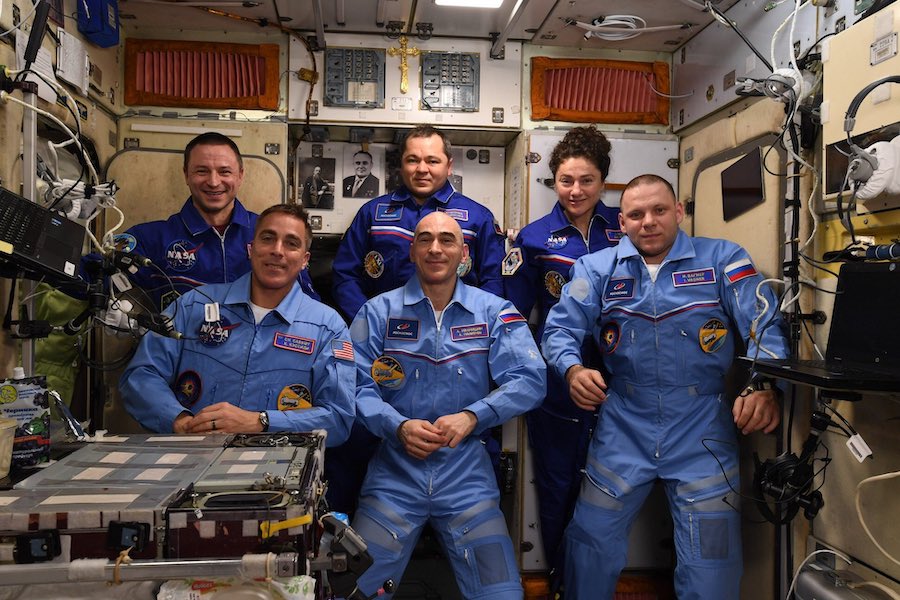
From that point forward, Cassidy will be the only U.S. crew member aboard the station until SpaceX launches its Crew Dragon spacecraft on its first piloted mission in the late May timeframe.
But NASA’s commercial crew program, already running two years behind schedule, has been repeatedly delayed by funding shortfalls and technical problems and the current launch target is far from guaranteed.
With the Kennedy Space Center closed to all but essential personnel to minimize possible exposure to the coronavirus, NASA and SpaceX must get through a battery of remotely conducted reviews to verify the readiness of the spacecraft, astronauts and ground systems to support launch.
SpaceX is not subject to the same work rules as NASA civil servants and it’s not yet known what impact the coronavirus might have on the hardware processing schedule, but the company is pressing ahead with launch preparations.
NASA managers had expected to already be launching astronauts aboard SpaceX and Boeing commercial crew ships by now, ending the agency’s sole reliance on the Soyuz. Equally important, the new crew ships are needed to ensure the presence of three to four U.S.-sponsored astronauts aboard the station at all times to carry out a full slate of scientific research.
Anticipating the advent of U.S. commercial crew ships, Russia scaled back production of its three-seat Soyuz spacecraft and only two will be launched this year: the Soyuz MS-16/62S vehicle on Thursday and the second on Oct. 14.
NASA currently only has one Soyuz seat — Cassidy’s — under contract with Roscosmos. The agency is negotiating for a seat aboard the October flight and possibly a second seat next spring, but no contracts have yet been signed.
Uncertainty about the commercial crew schedule prompted NASA last year to put Cassidy on the Soyuz MS-16/62S crew in place of Japanese astronaut Akihiko Hoshide. A space veteran, Hoshide was expected to serve as space station commander during the Tokyo Summer Olympics, a prestigious assignment for JAXA, the Japanese space agency.
But at least one U.S. astronaut is required to be aboard the space station at all times to operate and maintain NASA systems. Given delays in the commercial crew program, NASA put Cassidy on the Soyuz crew in Hoshide’s place as a precaution to ensure a U.S. presence on the station in the event of additional commercial crew delays.
“We’re good buddies, fortunately,” Cassidy said of Hoshide. “He’s a true professional. Any astronaut wants to be on a rocket with their name on it, and I’m sure he’s no different. But it ultimately wasn’t about any person, it was about protecting U.S. presence in space.”

